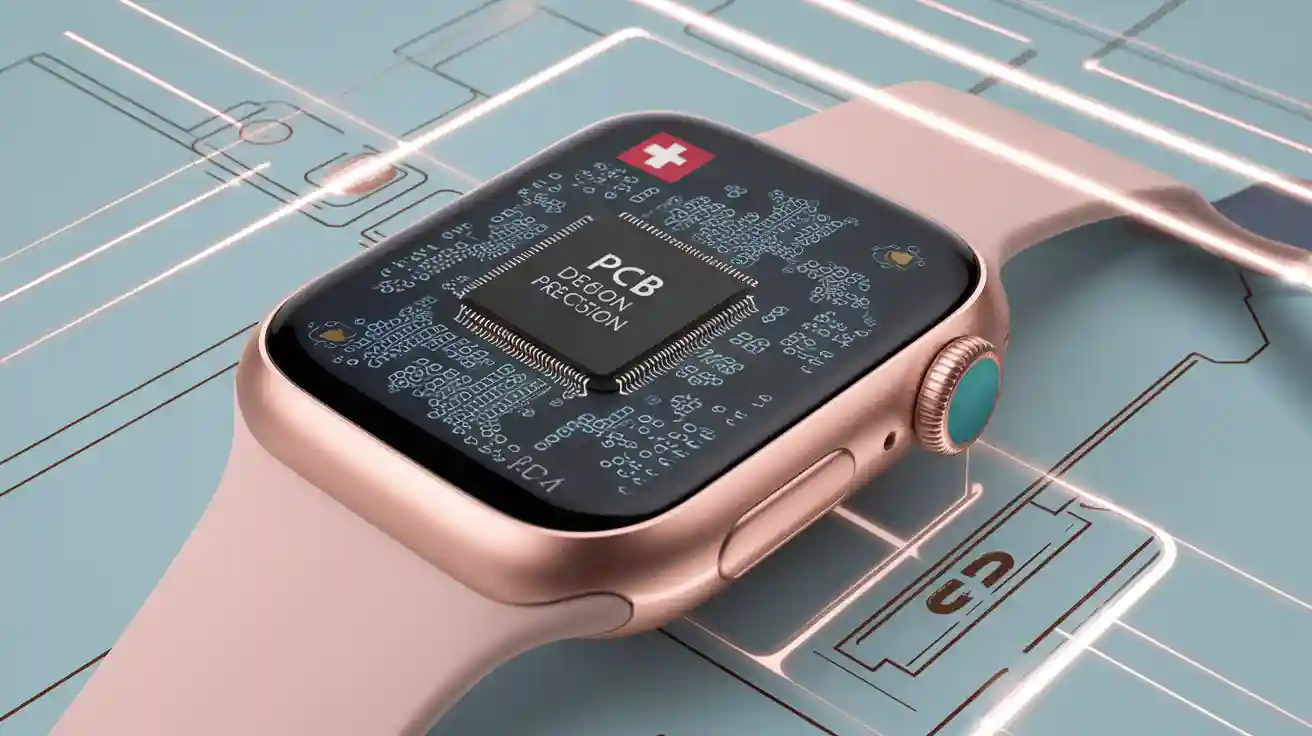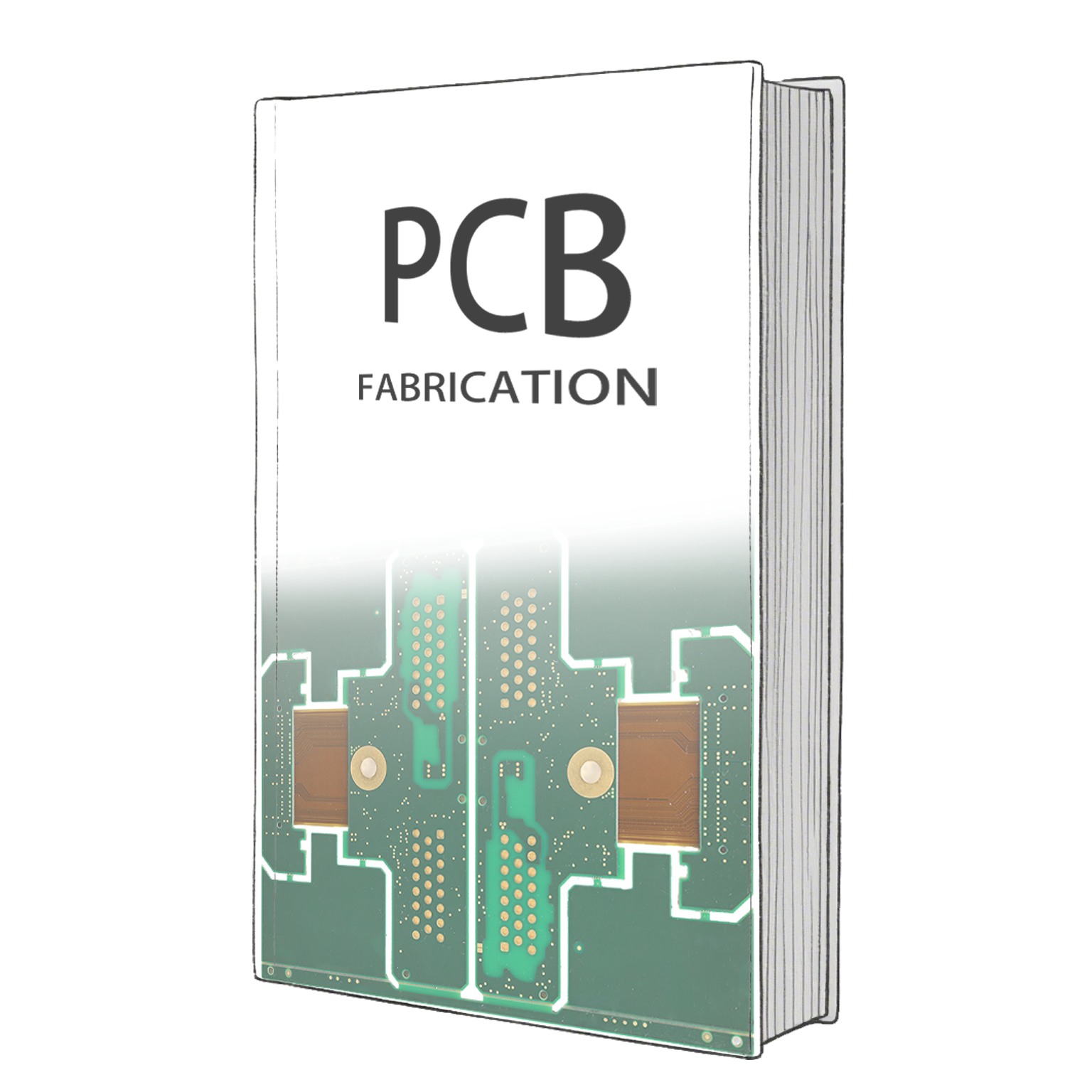6-Layers Rigid Flex PCB Design for Smart watches of Swiss Customers
Swiss smartwatch manufacturers demand innovation and precision in every component. The 6-layer rigid flex PCB design plays a critical role in meeting these expectations. You need a design that combines flexibility and rigidity to create compact, durable, and high-performance wearables. This advanced PCB structure integrates multiple layers, enabling seamless connections between rigid and flexible sections. It ensures your smartwatch can handle complex functionalities like health tracking and connectivity while maintaining a sleek, lightweight design. By leveraging rigid flex PCB technology, you can deliver products that meet Swiss standards of quality and sophistication.
6-Layer Rigid Flex PCBs Hierarchy
Structure and Functionality
The structure of a 6-layer rigid flex PCB combines rigid and flexible sections to create a unified, high-performance circuit board. This design allows you to integrate multiple layers of circuitry while maintaining flexibility in specific areas. The rigid sections provide mechanical support for components, while the flexible layers enable bending and folding to fit compact spaces. This hybrid structure is essential for wearable devices like smartwatches, where space is limited, and functionality is paramount.
To ensure optimal performance, rigid flex PCBs adhere to strict industry standards. The following table highlights key IPC standards that govern their design and functionality:
| IPC Standard | Description |
|---|---|
| IPC-2222 | Defines layout requirements for rigid boards to ensure structural integrity. |
| IPC-2223 | Provides guidelines for designing flexible printed boards for dynamic use. |
| IPC-2224 | Focuses on multilayered boards with complex circuitry for high-performance needs. |
| IPC-2225 | Covers organic printed boards with specific conductor and bonding properties. |
| IPC-2226 | Addresses high-density boards for compact electronics like wearables. |
By adhering to these standards, you can achieve a balance between durability, reliability, and advanced functionality in your smartwatch designs.
Advantages for Wearable Technology
Rigid flex PCBs offer several advantages that make them ideal for wearable technology. These benefits stem from their unique structure and ability to meet the demands of compact, high-performance devices. Here are some key advantages:
- Space efficiency: The elimination of bulky connectors allows you to design smaller, sleeker devices. This is crucial for wearables like smartwatches, where every millimeter counts.
- Reliability: With fewer connectors and solder joints, rigid flex PCBs reduce potential points of failure, ensuring your devices perform consistently over time.
- Durability: These PCBs withstand mechanical stress and environmental changes, making them suitable for wearables exposed to daily wear and tear.
- Cost savings: By replacing multiple traditional PCBs and connectors with a single rigid flex PCB, you can lower assembly costs and simplify production.
- Design flexibility: The ability to create intricate 3D layouts allows you to innovate with curved or compact designs, enhancing the aesthetic appeal of your products.
The following table summarizes the performance metrics that highlight these advantages:
| Performance Metric | Advantage |
|---|---|
| Space Efficiency | Saves space by eliminating bulky connectors and fitting into tight spaces. |
| Reliability & Durability | Fewer interconnects improve reliability and withstand harsh conditions. |
| Design Flexibility | Adapts to complex 3D layouts, enabling compact and curved designs. |
By leveraging these benefits, you can create wearable devices that not only meet but exceed customer expectations in terms of functionality, durability, and design.
Key Design Considerations for Swiss Smartwatches
Precision and Quality Expectations
Swiss customers expect nothing less than perfection when it comes to smartwatches. Precision and quality are non-negotiable, especially in the intricate design of rigid flex PCBs. You must ensure that every component aligns seamlessly to avoid mismatches that could compromise functionality. Recent studies highlight several factors influencing user perception of quality:
- Mismatches in data: Users often identify inconsistencies in smartwatch readings, such as incorrect activity tracking or location errors.
- Contextual factors: The environment, user activity, and even co-experience with others can affect how mismatches are perceived.
- Personal factors: Goals, motivations, and past experiences shape user expectations and tolerance for errors.
By addressing these challenges, you can design PCBs that deliver accurate, reliable performance. This involves rigorous testing and calibration to ensure that your smartwatch meets the high standards of Swiss craftsmanship.
Compactness and Aesthetic Appeal
The compact design of a smartwatch demands innovative PCB layouts. Rigid flex PCBs excel in this area by enabling efficient use of space without compromising functionality. To meet consumer expectations, you need to focus on both performance and visual appeal. Key considerations include:
- Neat integration: The PCB must fit seamlessly into the device’s compact structure.
- Aesthetic importance: Consumers value wearables that look as good as they perform.
- Efficient power management: Compact designs require careful placement of components to optimize battery life.
- Fashionable technology: The rise of stylish wearables means your designs must balance innovation with practicality.
By prioritizing these aspects, you can create smartwatches that are not only functional but also visually appealing, ensuring they resonate with modern consumers.
Environmental and Regulatory Compliance
Swiss smartwatches must adhere to strict environmental and safety standards. Your PCB design should incorporate features that meet these requirements while maintaining high performance. Key regulatory standards include:
| Standard | Description |
|---|---|
| ISO 10993 | Evaluates device safety, including bioburden, pyrogens, and sterility. |
| IEC 60601-1 | Ensures the basic safety and essential performance of medical devices, requiring proper PCB cleaning. |
In addition to these standards, you must consider guidelines for electromagnetic interference (EMI) and safety. Incorporating shielding, grounding, and protection mechanisms into your design ensures compliance with local and international regulations. Certifications like ISO, CE, and RoHS further validate your product’s quality and environmental responsibility.
By addressing these regulatory and environmental factors, you can create smartwatches that meet global standards while maintaining the precision and durability expected by Swiss customers.
Challenges in 6-Layer Rigid Flex PCB Design
Signal Integrity and Layer Stack-Up
Signal integrity plays a pivotal role in ensuring the performance of rigid flex PCBs, especially in high-speed applications. Poor signal integrity can lead to data loss, electromagnetic interference, and reduced device reliability. To address these challenges, you must carefully design the layer stack-up to optimize signal flow and minimize interference.
The guide outlines a standard 6-layer stackup and a 6-layer rigid-flex stackup, detailing the arrangement of layers to balance signal integrity and manufacturing costs. It emphasizes the importance of layer arrangement in achieving optimal performance in rigid-flex PCB applications.
The article discusses how stack-up design is crucial for maintaining signal integrity in high-speed PCB designs. It highlights that signal integrity must be considered from the beginning of the design process and emphasizes the importance of collaboration between engineering and manufacturing to ensure that the PCB design is feasible and meets performance requirements.
To enhance signal integrity, consider the following strategies:
- Use materials with a low dielectric constant to maintain signal speed.
- Isolate high-speed signal layers using ground or power planes to reduce crosstalk.
- Incorporate polyimide materials for flexibility in rigid-flex designs.
By implementing these techniques, you can create a robust layer stack-up that supports high-speed signals while maintaining the compactness required for wearable devices.
Manufacturing and Assembly Complexity
The intricate design of 6-layer rigid flex PCBs introduces significant manufacturing and assembly challenges. These challenges stem from the need to balance flexibility and rigidity while ensuring precise alignment of components. Higher complexity often results in lower production yields, which can impact profitability.
| Evidence Description | Impact on Production Yields |
|---|---|
| Higher complexity in PCBs leads to lower yields due to cumulative design factors. | Negative impact on yield and profitability. |
| The Complexity Index (CI) serves as a critical parameter in calculating First Pass Yield (FPY). | Helps quantify the effects of complexity on yields. |
| Design factors can have a cumulative effect on manufacturing yield, even if individually they seem acceptable. | Can dramatically reduce yield and profitability. |
To mitigate these issues, you must collaborate closely with PCB manufacturers. Early involvement in the design process allows you to identify potential bottlenecks and streamline assembly procedures. Additionally, adopting advanced manufacturing techniques, such as automated optical inspection (AOI) and X-ray inspection, can improve production yields and reduce errors.
Cost Optimization Strategies
Cost optimization is a critical consideration in rigid flex PCB design, especially for Swiss smartwatches that demand high-quality components. Rising demand in sectors like electronics and healthcare has driven growth in the PCB assembly market, making cost-efficiency more important than ever.
To reduce costs without compromising quality, focus on the following strategies:
- Utilize PCB component management services to streamline procurement and storage.
- Implement lean design principles to eliminate waste and enhance efficiency.
- Optimize processes throughout the PCB design lifecycle to improve product quality and reduce expenses.
The adoption of lean design principles can significantly enhance efficiency. By eliminating unnecessary steps and focusing on essential features, you can create a cost-effective design that meets performance requirements. Additionally, leveraging component management services ensures timely procurement and reduces storage costs, further contributing to cost savings.
Best Practices for Rigid Flex PCB Design
Collaboration with PCB Manufacturers
Collaborating with PCB manufacturers is essential for achieving high-quality rigid flex PCB designs. Early consultation ensures your design aligns with manufacturing capabilities, reducing errors and delays. Regular design reviews help identify potential issues before production begins, saving time and resources. Establishing clear communication channels allows you to share updates and feedback efficiently, fostering a smoother workflow.
Adopting standardized formats for design files streamlines information exchange, minimizing misunderstandings. Collaborative design software enables real-time teamwork, ensuring all stakeholders remain aligned throughout the process. Incorporating design for manufacturability (DFM) principles optimizes your design for production, enhancing yield and reducing costs. Collaborative prototype testing further refines your design, addressing issues before mass production.
By working closely with manufacturers, you can also gain insights into cost-saving measures, material selection, and process optimization. This partnership ensures your rigid flex PCB meets performance requirements while maintaining efficiency and quality.
Simulation and Testing Techniques
Simulation and testing techniques validate your rigid flex PCB design, ensuring reliability and performance. Electrical testing methods, such as continuity tests and flying probe testing, verify circuit integrity. Bend tests assess the durability of flex circuits under repeated mechanical stress, ensuring they withstand daily wear and tear.
Thermal performance evaluations measure how your PCB performs under varying temperature conditions, a critical factor for wearable devices. Visual inspections and automated testing methods enhance quality control, identifying defects early in the production process. These techniques ensure your design meets industry standards and customer expectations.
Incorporating these testing methods into your design process minimizes risks and enhances the reliability of your rigid flex PCB. By validating your design through rigorous testing, you can deliver products that perform consistently in real-world applications.
Material Selection for Performance and Compliance
Selecting the right materials is crucial for ensuring the durability and regulatory compliance of your rigid flex PCB. Materials with high glass transition temperatures maintain mechanical stability under heat, making them ideal for wearables exposed to varying conditions. Mechanical properties, such as tensile strength and impact resistance, enhance the durability of your PCB, ensuring it withstands physical stress.
Environmental impact considerations, including sustainable practices and waste management, align your design with global standards. Choosing materials that balance performance and environmental responsibility ensures your product meets regulatory requirements while maintaining high quality.
Optimizing material selection enhances the functionality and reliability of your rigid flex PCB. By prioritizing performance and compliance, you can create designs that meet customer expectations and industry standards.
Benefits of 6-Layer Rigid Flex PCBs for Swiss Smartwatches
Enhanced Functionality and Features
A 6-layer rigid flex PCB enhances the functionality of your smartwatch by enabling advanced features in a compact design. These PCBs utilize cutting-edge techniques, such as microvia technology, to achieve a small size while maintaining a large bending radius. This allows you to integrate complex circuits into limited spaces without compromising performance. The multi-layer structure supports high-speed signal transmission, ensuring seamless connectivity for features like GPS, Bluetooth, and health monitoring.
Additionally, the compact form factor of these PCBs makes them ideal for wearable devices. You can incorporate sensors, processors, and communication modules into a single board, reducing the need for external components. This integration not only improves functionality but also simplifies assembly, leading to faster production cycles and lower costs.
Durability and Long-Term Reliability
Durability is a critical factor for smartwatches, which endure daily wear and exposure to various environmental conditions. A 6-layer rigid flex PCB provides exceptional mechanical strength and flexibility, ensuring your device withstands repeated bending and twisting. The hybrid structure minimizes the risk of solder joint failures, a common issue in traditional PCBs.
These PCBs also excel in thermal management. The materials used in their construction dissipate heat efficiently, protecting sensitive components from damage. This ensures your smartwatch maintains consistent performance over time, even under heavy usage. By choosing a rigid flex PCB, you can deliver a product that meets the high reliability standards expected by Swiss customers.
Competitive Advantage in the Swiss Market
Swiss consumers value precision, quality, and innovation. A 6-layer rigid flex PCB gives you a competitive edge by enabling sleek, feature-rich designs that align with these expectations. The ability to create compact, aesthetically pleasing devices sets your smartwatch apart in a crowded market. Moreover, the reduced failure rates and enhanced durability of these PCBs translate to higher customer satisfaction and brand loyalty.
By leveraging this technology, you can position your smartwatch as a premium product that embodies Swiss craftsmanship. This not only attracts discerning customers but also strengthens your reputation as a leader in wearable technology.
The 6-layer rigid-flex PCB design is vital for Swiss smartwatches, enabling compact, durable, and feature-rich devices. By adopting best practices and collaborating with experts, you can optimize material selection, reduce design revisions, and enhance performance. For example:
| Aspect | Benefit |
|---|---|
| Collaboration | Enhances understanding of electrical and mechanical principles through teamwork. |
| Material Selection | Proper material choices lead to improved performance and reliability. |
| Design Considerations | Early input from manufacturers reduces design revision costs and optimizes layer usage. |
Prioritizing quality, compliance, and innovation ensures your smartwatch meets customer expectations and stands out in the competitive Swiss market.
FAQ
1. What makes 6-layer rigid-flex PCBs ideal for smartwatches?
The hybrid structure combines flexibility and rigidity, enabling compact designs. It supports advanced features like GPS and health monitoring while ensuring durability. You can achieve high performance in limited spaces, making it perfect for wearable devices.
2. How do rigid-flex PCBs improve reliability?
Rigid-flex PCBs reduce solder joints and connectors, minimizing failure points. Their robust materials withstand mechanical stress and environmental changes. You can rely on them for consistent performance in wearables exposed to daily use.
3. Are 6-layer rigid-flex PCBs cost-effective?
Yes, they eliminate the need for multiple PCBs and connectors, reducing assembly costs. By optimizing the design and manufacturing process, you can achieve cost savings without compromising quality or functionality.
4. What materials are best for rigid-flex PCBs in wearables?
Polyimide materials offer flexibility and thermal stability. High glass transition temperature materials ensure mechanical strength under heat. You should prioritize materials that balance durability, performance, and compliance with environmental standards.
5. How can you ensure signal integrity in rigid-flex PCB designs?
Use low dielectric constant materials to maintain signal speed. Isolate high-speed signal layers with ground planes to reduce interference. Collaborate with manufacturers to optimize layer stack-up for seamless signal flow.




















